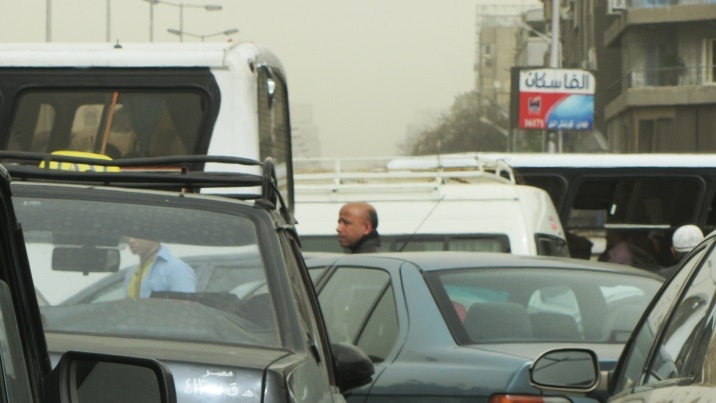The new government has its eye on congestion, and the World Bank Group is ready to help tackle it
There is one issue that every resident of Cairo can agree on: something needs to be done about the traffic. The Egyptian capital is notorious for its congestion, a universal source of frustration that affects everyone across the entire social spectrum.
Yet the traffic jams are much more than an annoyance. They have very real economic, environmental and public health consequences.
A recent World Bank report, the Cairo Traffic Congestion Study estimated the annual costs of the congestion in Cairo to be up to EGP50 billion, or US$8.0 billion. That represents up to four percent of Egypt’s Gross Domestic Product (GDP), which is four times the usual estimate of one percent of GDP as the cost of congestion in comparable large cities.
Direct costs include the loss of productivity due to sitting in traffic rather than working, the additional fuel consumed by extended travel times and the environmental impact of increased vehicle emissions. There are also indirect costs, such as the effect of the environmental degradation on public health.
The traffic is also deadly.
At least 1,000 Cairenes die each year in traffic related accidents, of whom more than half are pedestrians, and over 4,000 are injured. These rates are far higher than those recorded in most other major cities of the world.
Too many cars, not enough trains and buses
There have been efforts to address the problem, through the expansion of public transportation and the better management of traffic flows, but they have not kept pace with the growth of the city.
In relation to its large and growing population, Cairo has a very small metro system. It is far smaller than the systems of other major cities, but much more crowded. Though it is half the size of the Washington DC metro, it carries four times more passengers per km of line.
There is a similar lack of buses compared to population size.
Cars, on the other hand, choke every inch of available road space. The actual rates of car ownership may be low, but the ratio of cars to km of road is one of the highest in the world.
A renewed commitment
Egypt’s new president, Mohammed Mursi, has identified the congestion in the nation’s capital as one of his primary concerns. He has taken on both a necessary and formidable challenge that will require, among a host of issues, investments in public transportation, increased capacity to manage traffic flows, the creation of safe zones for pedestrians and the reform of politically sensitive fuel subsidies, which only encourage the use of private cars.
The real challenge, however, will be prioritizing objectives, and determining where to invest precious public funds for maximum effect. It will also require political will. While everyone may agree on the need to fix the traffic problem, there will be inevitable disagreements on the remedy. It will require a clear and well structured plan, backed by strong evidence.
The World Bank Group has had extensive, global experience helping other major cities develop plans to manage similar problems. The accumulated knowledge and expertise has been put at the disposal of Egyptian authorities, most notably in support of the establishment of the Cairo Transportation Authority.
The specific challenge the Egyptian capital faces is one the Bank Group knows well. The extensive analysis undertaken in the recent study, by clearly defining the recurring economic, social and environmental costs of congestion, provides a solid justification for significant public investments in a solution. It also puts an irrefutable price on inaction. A complementary study, Greater Cairo: a proposed urban transport strategy makes recommendations on possible solutions, and outlines the concrete means to achieve them.
Congestion does not have to be a fact of life. Cairo could be a more livable city, with adequate public transportation for the many that rely on it, and safer, less congested streets for all. As with any seemingly intractable problem, a commitment to take action is the essential first step, one which the World Bank Group is ready to support with the full range of its resources.

